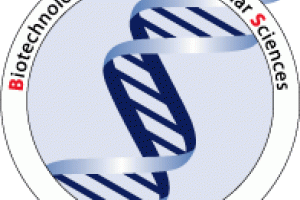
Biography
Professional Experience:
2010 – current: Senior Research Associate, School of BABS
2007 – 2010: Postdoctoral Research Fellow, School of BABS
Research Contribution:
Dr Du’s research focuses on understanding the molecular mechanisms of intracellular lipid trafficking and investigating how changes in membrane lipid distribution and metabolism contribute to metabolic disorders and cancer. He received a PhD from UNSW in 2007 for studies...view more
Professional Experience:
2010 – current: Senior Research Associate, School of BABS
2007 – 2010: Postdoctoral Research Fellow, School of BABS
Research Contribution:
Dr Du’s research focuses on understanding the molecular mechanisms of intracellular lipid trafficking and investigating how changes in membrane lipid distribution and metabolism contribute to metabolic disorders and cancer. He received a PhD from UNSW in 2007 for studies examining molecular machinery controlling cholesterol homeostasis and cell signalling. After his PhD training, Dr Du continued to investigate molecular functions of lipid transfer proteins, such as Niemann Pick Type C proteins and oxysterol-binding protein-related proteins. He has since developed a keen interest in intracellular lipid trafficking and its role in human diseases. He has gained further extensive experience in genetics, molecular cloning, genome editing, protein purification, lipidomics, advanced fluorescent microscopy, and new model systems such as yeast and mouse. In 2010, Dr Du became a Senior Research Associate. He is currently leading a research team focusing on organellar membrane lipid dynamics mediated by lipid transfer proteins at the School of BABS, UNSW.
Dr Du has a record of continuing publications in high-profile, peer-reviewed journals, including Cell, Nature, Science, Molecular Cell, Nature Communications, Developmental Cell, Cell Reports, Journal of Cell Biology, Journal of Lipid Research, Molecular Biology of the Cell, and Journal of Biological Chemistry. Dr Du serves as a referee for the NHMRC and a reviewer for the International Journal of Cell Biology, PLOS ONE and others. He is also an active member of the ASBMB and Biochemical Society (London).
Dr Du’s publications and citations can be found at:
https://scholar.google.com/citations?user=5qcHpYoAAAAJ&hl=en
Selected Publications:
Zadoorian A, Du X and Yang H. (2023) Lipid droplet biogenesis and functions in health and disease. Nature Reviews Endocrinology. https://doi.org/10.1038/s41574-023-00845-0 (PMID: 37221402)
Coates HW, Capell-Hattam IM, Olzomer EM, Du X, Farrell R, Yang H, Byrne FL, Brown AJ. (2023) Hypoxia truncates and constitutively activates the key cholesterol synthesis enzyme squalene monooxygenase. eLife. Jan 19;12:e82843. doi: 10.7554/eLife.82843. (PMID: 36655986)
Keable R, Hu S, Pfundstein G, Kozlova I, Su F, Du X, Yang H, Gunnersen J, Schachner M, Leshchyns'ka I, Sytnyk V. (2022) The BACE1-generated C-terminal fragment of the neural cell adhesion molecule 2 (NCAM2) promotes BACE1 targeting to Rab11-positive endosomes. Cellular and Molecular Life Sciences. Oct 17;79(11):555. doi: 10.1007/s00018-022-04575-w. (PMID: 36251052)
Lukmantara I, Chen F, Mak HY, Zadoorian A, Du X, Xiao FN, Norris DM, Pandzic E, Whan R, Zhong Q and Yang H. (2022) PI(3)P and DFCP1 regulate the biogenesis of lipid droplets. Mol Biol Cell. 33(14):ar131. (PMID: 36129766)
Mak HY, Ouyang Q, Tumanov S, Xu J, Rong P, Dong F, Lam SM, Wang X, Lukmantara I, Du X, Gao M, Brown AJ, Gong X, Shui G, Stocker R, Huang X, Chen S and Yang H. (2021) AGPAT2 interaction with CDP-diacylglycerol synthases promotes the flux of fatty acids through the CDP-diacylglycerol pathway. Nature Communications. 12(1):6877. doi: 10.1038/s41467-021-27279-4. (PMID: 34824276)
Zhang T, Li YE, Yuan Y, Du X, Wang Y, Dong X, Yang H, Qi S. TMEM41B and VMP1 are phospholipid scramblases. Autophagy 1-3 12 Jun 2021 (PMID: 34074213)
Li YE*, Wang Y*, Du X*, Zhang T, Mak HY, Hancock SE, McEwen H, Pandzic E, Whan RM, Aw YC, Lukmantara IE, Yuan Y, Dong X, Don A, Turner N, Qi S and Yang H. (2021) TMEM41B and VMP1 are scramblases and regulate the distribution of cholesterol and phosphatidylserine. Journal of Cell Biology; 220 (6), e202103105(*co-first) (PMID: 33929485)
Yan R, Cao P, Song W, Qian H, Du X, Coates HW, Zhao X, Li Y, Gao S, Gong X, Liu X, Sui J, Lei J, Yang H, Brown AJ, Zhou Q, Yan C, Yan N. (2021) A structure of human Scap bound to Insig-2 suggests how their interaction is regulated by sterols. Science Jan 14:eabb2224. doi: 10.1126/science.abb2224. (PMID: 33446483)
Du, X., Yang, H. (2021) Seipin regulates the formation of nuclear lipid droplets from a distance. Journal of Cell Biology Jan 4;220(1):e202011166. doi: 10.1083/jcb.202011166. (PMID: 33320190)
Qian, H.*, Wu, X.*, Du, X.*, Yao, X., Zaho, X., Yang, H., and Yan, N. (2020) Structural basis of low pH-dependent lysosomal cholesterol egress by NPC1 and NPC2. Cell 182, 1-14 (*co-first) (PMID: 32544384)
Qian, H., Zhao, X., Yan, R., Yao, X., Gao, S., Sun, X., Du, X., Yang, H., Wong, C. C. L., and Yan, N. (2020) Structural basis for catalysis and substrate specificity of human ACAT1. Nature 581, 333-338 (PMID: 32433614)
Du, X.*, Zhou, L., Aw, Y. C., Mak, H. Y., Xu, Y., Rae, J., Wang, W., Zadoorian, A., Hancock, S. E., Osborne, B., Chen, X., Wu, J. W., Turner, N., Parton, R. G., Li, P., and Yang, H.* (2020) ORP5 localizes to ER-lipid droplet contacts and regulates the level of PI(4)P on lipid droplets. Journal of Cell Biology 219 (*co-corresponding) (PMID: 31653673)
Wang, H., Ma, Q., Qi, Y., Dong, J., Du, X., Rae, J., Wang, J., Wu, W. F., Brown, A. J., Parton, R. G., Wu, J. W., and Yang, H. (2019) ORP2 Delivers Cholesterol to the Plasma Membrane in Exchange for Phosphatidylinositol 4, 5-Bisphosphate (PI(4,5)P2). Molecular Cell 73, 458-473 e457 (PMID: 30581148)
Dong, J.*, Du, X.*, Wang, H.*, Wang, J., Lu, C., Chen, X., Zhu, Z., Luo, Z., Yu, L., Brown, A. J., Yang, H., and Wu, J. W. (2019) Allosteric enhancement of ORP1-mediated cholesterol transport by PI(4,5)P2/PI(3,4)P2. Nature Communications 10, 829 (*co-first) (PMID: 30783101)
Yan, R., Qian, H., Lukmantara, I., Gao, M., Du, X., Yan, N., and Yang, H. (2018) Human SEIPIN Binds Anionic Phospholipids. Developmental Cell 47, 248-256 e244 (PMID: 30293840)
Du, X.*, Zadoorian, A., Lukmantara, I. E., Qi, Y., Brown, A. J., and Yang, H.* (2018) Oxysterol-binding protein-related protein 5 (ORP5) promotes cell proliferation by activation of mTORC1 signaling. Journal of Biological Chemistry 293, 3806-3818 (*co-corresponding) (PMID: 29358326)
Du, X., Turner, N., and Yang, H. (2018) The role of oxysterol-binding protein and its related proteins in cancer. Seminars in Cell and Developmental Biology 81, 149-153 (PMID: 28733164)
Ghai, R.*, Du, X.*, Wang, H., Dong, J., Ferguson, C., Brown, A. J., Parton, R. G., Wu, J. W., and Yang, H. (2017) ORP5 and ORP8 bind phosphatidylinositol-4, 5-biphosphate (PtdIns(4,5)P 2) and regulate its level at the plasma membrane. Nature Communications 8, 757 (*co-first) (PMID: 28970484)
Pagac, M., Cooper, D. E., Qi, Y., Lukmantara, I. E., Mak, H. Y., Wu, Z., Tian, Y., Liu, Z., Lei, M., Du, X., Ferguson, C., Kotevski, D., Sadowski, P., Chen, W., Boroda, S., Harris, T. E., Liu, G., Parton, R. G., Huang, X., Coleman, R. A., and Yang, H. (2016) SEIPIN Regulates Lipid Droplet Expansion and Adipocyte Development by Modulating the Activity of Glycerol-3-phosphate Acyltransferase. Cell Reports 17, 1546-1559 (PMID: 27806294)
Du, X.*, Zhang, Y., Jo, S. R., Liu, X., Qi, Y., Osborne, B., Byrne, F. L., Smith, G. C., Turner, N., Hoehn, K. L., Brown, A. J., and Yang, H.* (2015) Akt activation increases cellular cholesterol by promoting the proteasomal degradation of Niemann-Pick C1. Biochemical Journal 471, 243-253 (*co-corresponding) (PMID: 26283546)
Du, X., Brown, A. J., and Yang, H. (2015) Novel mechanisms of intracellular cholesterol transport: oxysterol-binding proteins and membrane contact sites. Current Opinion in Cell Biology 35, 37-42 (PMID: 25932595)
Chu, B. B., Liao, Y. C., Qi, W., Xie, C., Du, X., Wang, J., Yang, H., Miao, H. H., Li, B. L., and Song, B. L. (2015) Cholesterol transport through lysosome-peroxisome membrane contacts. Cell 161, 291-306 (PMID: 25860611)
Du, X., Kazim, A. S., Dawes, I. W., Brown, A. J., and Yang, H. (2013) The AAA ATPase VPS4/SKD1 regulates endosomal cholesterol trafficking independently of ESCRT-III. Traffic 14, 107-119 (PMID: 23009658)
Du, X., Kazim, A. S., Brown, A. J., and Yang, H. (2012) An essential role of Hrs/Vps27 in endosomal cholesterol trafficking. Cell Reports 1, 29-35 (PMID: 22832105)
Du, X., Kumar, J., Ferguson, C., Schulz, T. A., Ong, Y. S., Hong, W., Prinz, W. A., Parton, R. G., Brown, A. J., and Yang, H. (2011) A role for oxysterol-binding protein-related protein 5 in endosomal cholesterol trafficking. Journal of Cell Biology 192, 121-135 (PMID: 21220512)
Fei, W., Shui, G., Gaeta, B., Du, X., Kuerschner, L., Li, P., Brown, A. J., Wenk, M. R., Parton, R. G., and Yang, H. (2008) Fld1p, a functional homologue of human seipin, regulates the size of lipid droplets in yeast. Journal of Cell Biology 180, 473-482 (PMID: 18250201)
Du, X., Kristiana, I., Wong, J., and Brown, A. J. (2006) Involvement of Akt in ER-to-Golgi transport of SCAP/SREBP: a link between a key cell proliferative pathway and membrane synthesis. Molecular Biology of Cell 17, 2735-2745 (PMID: 16571675)
Du, X., Pham, Y. H., and Brown, A. J. (2004) Effects of 25-hydroxycholesterol on cholesterol esterification and sterol regulatory element-binding protein processing are dissociable: implications for cholesterol movement to the regulatory pool in the endoplasmic reticulum. Journal of Biological Chemistry 279, 47010-47016 (PMID: 15317807)
My Qualifications
2003 – 2007: PhD in Biochemistry and Molecular Genetics, UNSW
2002 – 2003: MSc in Biotechnology, UNSW
My Awards
2019, Research Excellence Awards, Australian Association of Chinese Biomedical Scientists
2020, Research Excellence Awards, Australian Association of Chinese Biomedical Scientists
My Research Activities
RESEARCH INTERESTS
1. Intracellular lipid (e.g., cholesterol and phosphatidylserine) sorting/transport/scrambling by lipid bind/transfer proteins and scramblases
2. The role of membrane lipid distribution in cancer and neurodegenerative diseases.
3. The biology of lipid droplets and their associated proteins.
RESEARCH ACHIEVEMENTS
My research has contributed to the significant advance of knowledge in the field of intracellular lipid sensing, trafficking, and storage. My previous work demonstrated that:
- newly identified phospholipid scramblases TMEM41B and VMP1 regulate the intracellular distribution of phosphatidylserine (PS), the focus of this project (Li et al, J. Cell Biol. 2021).
- lysosomal cholesterol egress requires low-pH-dependent structural alteration of NPC1 and NPC2 (Qian et al, Cell 2020).
- lipid transfer protein ORP5 can connect the endoplasmic reticulum to lipid droplet and maintain the abundance of lipids on the lipid droplet surface (Du et al, J Cell Biol. 2020).
- lipid transfer proteins, including ORP1, ORP5 and ORP8, can exchange lipids between two organelles at membrane contact sites (Ghai et al. Nat. Commun. 2017; Dong et al. Nat. Commun. 2019).
- lipid transfer proteins such as NPC1 and ORP5 can be associated with cell signalling and play a role in cancer development (Du et al. Biochem. J. 2015; Du et al. J. Biol. Chem. 2018).
- lysosomal low-density lipoprotein-derived cholesterol transport involves endoplasmic reticulum-anchored lipid transfer proteins (ORP5) and the components (Hrs and VPS4) of the ESCRT (endosomal sorting complex required for transport) pathway (Du et al. J Cell Biol. 2011; Du et al. Cell Reports 2012; Du et al. Traffic 2013).
- processing of SREBP (sterol-responsive element binding protein), the transcription factor that governs cholesterol synthesis and uptake, is regulated by an important signalling molecule (Akt), linking a key cell proliferative pathway to membrane synthesis (Du et al. Mol. Biol. Cell 2006).
- effects of an oxysterol (25-hydroxycholesterol) on cholesterol esterification and cholesterol sensing by its homeostatic machinery are dissociable, providing the first insight into the measurement of cholesterol transport to the endoplasmic reticulum (Du et al. J. Biol. Chem. 2004).
